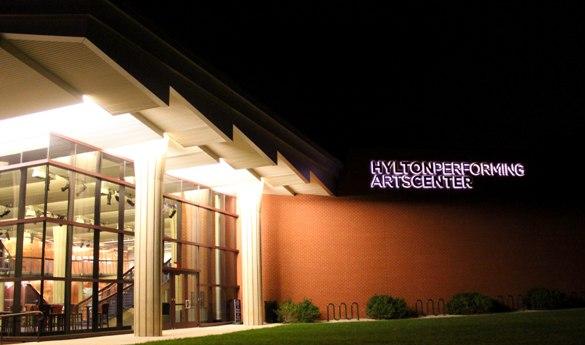Hylton Performing Arts Center receives grant to add education wing
The Hylton Performing Arts Center is in the preliminary planning stages to build an education wing after receiving a $2.5 million dollar grant and a $5 million dollar challenge grant from the Cecil & Irene Hylton Foundation.
Rick Davis, the associate dean of the College of Visual and Performing Arts and executive director of the Hylton Performing Arts Center, and Brian Marcus, associate dean for development at the College of Visual and Performing Arts, said that the Hylton’s growth over the years is a result of a rapidly changing community.
According to Davis, Prince William County is changing in three major ways: it is becoming wealthier, more diverse, and better educated.
“All the things that raise the quality of life are either very high now or are on the rise in Prince William County,” Davis said.
With the changes in wealth, diversity and education, Prince William County's citizens and government wanted to use the incoming wealth to increase the presence and accessibility of culture within the community.
A planning team was put together: the city, the county, the university, and the Institute of the Arts -which would soon become the Hylton Performing Arts Center.
Inflation within the construction industry raised the cost of the building process. To meet their budgetary cap, Davis said, the Institute shrunk the overall square footage of the building, losing a large rehearsal hall and other ancillary spaces.
“So we lost one key element of the building, which was a large rehearsal hall and ancillary spaces among other shrinkages around the building,” Davis said.
Mason built the theater in spite of the less ambitious construction plans, maintaining “the beautiful architecture of the building,” according to Davis, of the building so that the theater could at least grow beyond the planning stage of the design teams and have a use in the community. However, as the Hylton began to gain recognition and success after its opening in 2010, it was clear that the theater needed to be expanded.
“We had a business plan that we all worked on with the help of a consultant and it called for a substantial endowment fund to be raised in the form of $15 million.” Davis said.
Davis and Marcus explained that there were benchmarks that the Hylton Center was expected to meet for the initial endowment needed for the building. However, they were not able to meet these benchmarks due to inflation in construction and maintenance costs for the building. These issues left the Hylton with “a smaller building and a much smaller endowment,” Davis said.
Senator Colgan and the Cecil & Irene Hylton Foundation— the largest individual donors and namesakes for the project— never forgot the initial vision for the Center.
“Senator Colgan arranged for the state to set aside $6 million to finish the building,” Davis said. “We quickly jumped into action to do a master plan exercise to see what we needed, going back to the community and back to the university center to ask 'what can we do?' We discovered that there was even more demand than there was when we first conceived building the center.”
The board gathered information from the community and the university. They wanted to know what the public wanted and needed from the renovation of the arts center.
“To truly finish the building, we needed $8.5-8.6 million. So, to top off the state's six [million] we approached the Cecil & Irene Hylton Foundation for two things,” Davis said.
The Hylton needed $2.5 million to finish the building and the endowment they had planned for during the initial construction.
The Cecil & Irene Hylton Foundation responded by giving the Hylton a $5 million matching grant.
“That requires that we, over the period of the grant, match their five million with ten million. It's called a two-to-one match,” Marcus said.
For the $5 million the foundation provided, the Hylton must raise $10 million in the community. This matching grant goes specifically to the endowment for the center.
Davis appreciated the continued support by the ones who were with this project from the early stages especially from the art center’s initial investors.
”[They] continued to believe in us and the university was there as the trusted partner to manage this in a way that would be successful,” Davis said. “It's a real feather in the cap for George Mason.”
$2 million will go towards what will become the education wing of the Hylton Center.
According to the conceptual design for the new additions, the Hylton will be literally surrounded by the upcoming rehearsal and educational spaces.
A larger rehearsal hall will be about the size of the stage of the Merchant Hall in the current Hylton building for productions such as operas and ballets to practice in a fuller, more accurately proportioned space. A small rehearsal hall will provide appropriate rehearsal space for those who will perform in the black box theater. These spaces will also be used as classrooms and for meetings, community events and other social gatherings.
Additional spaces will be added to the building: classrooms to be used for classes or ensemble work, sound-proofed studios—smaller than rehearsal rooms but larger than the classrooms—, and office spaces built on the second floor where the administrative staff and the Hylton's partners to work.
“We are building this education wing because there has been such a call from the community to provide opportunities for students to gain actual art education content, rather than just having a performance hall where you sit and listen to concerts and dance. They wanted to really get involved.” Marcus said.

